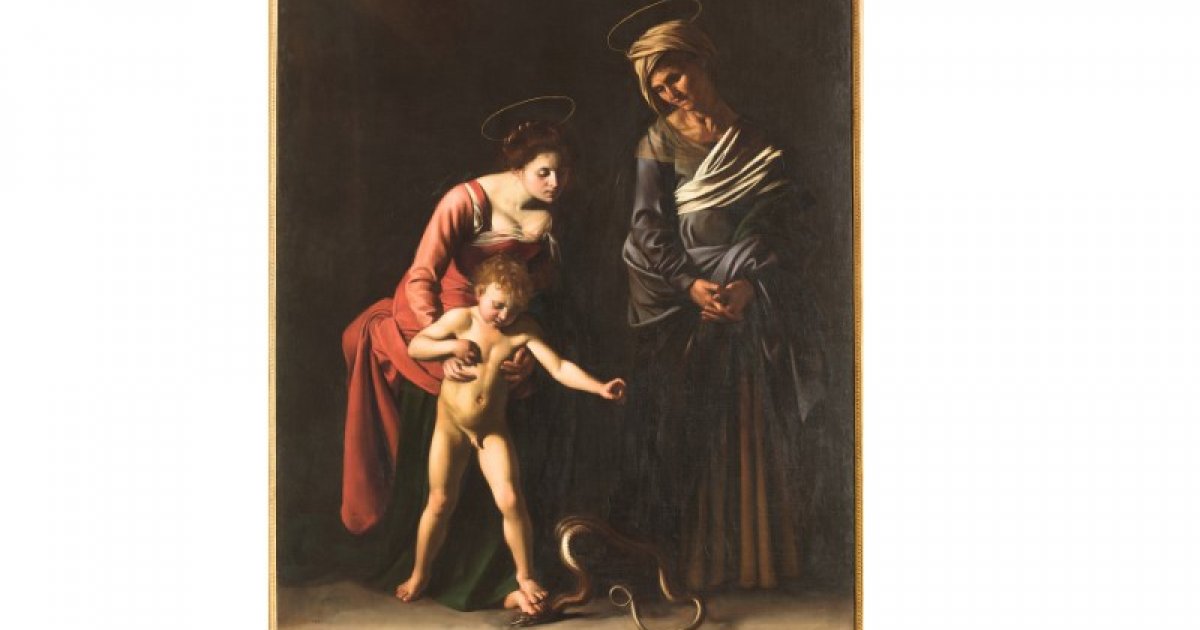GALLERIA BORGHESE, Caravaggio-Madonna Of The Palafrenieri_First Floor Room 8
 Language: English / USA
Language: English / USA
Back again to the Madonna and Child with St Anne or Dei Palafrenieri.
The work is named after an Archconfraternity of the Papal Grooms who commissioned the work from Caravaggio in 1605. Their task was to manage the pope's stables, where the horses used during parades, called palafreni, were kept.
Well, when St Peter's Basilica was renovated in the early-17th century, the chapel dedicated to the patron saint of grooms, St Anne, was also enlarged. These squires then decided to have a new painting made for the altar.
When they entrusted the task to Caravaggio, they most likely expected a work that would highlight their patroness and were not particularly satisfied with the end result, so much so that they exhibited it in St Peter's for less than a month before moving it to the small church of St Anne, dedicated to the confraternity, located a few steps away from the basilica.
After a short time, they were happy to sell the painting to Cardinal Borghese, a great admirer and collector of Caravaggio's works. Imagine, they had only paid 70 scudi for it and resold it for 100! And to think that the artist had probably accepted such a low fee in order to see one of his works exhibited at St Peter's, an opportunity that would certainly have burnished his reputation!
But what were the reasons for so much discontent?
First of all, looking at the canvas, you can immediately realize how little prominence is given to St Anne, Mary's mother, depicted as an elderly, wrinkled woman, almost side-lined and in the shadows. Worse still – for that time – was the appearance of the Virgin, portrayed in the guise of a woman of the people, with ample cleavage emphasizing her breasts. Finally, Jesus, whom you see in the act of trampling the serpent, representing Original Sin, is a grown child rather than an infant, he looks five or six years old, and is completely naked, which was also not in line with 17th-century canons.
Despite this, thanks to Cardinal Borghese who bought it, today you can admire the remarkable work, where light is the protagonist, as in all Caravaggio's paintings.
Here’s an interesting fact: at the time, another cause for scandal was that some of the artist's contemporaries recognized in the face of Mary, Maddalena Antognetti, a courtesan, possibly a lover of the painter. Caravaggio portrayed her in at least seven works, always as the Virgin or other saints.



